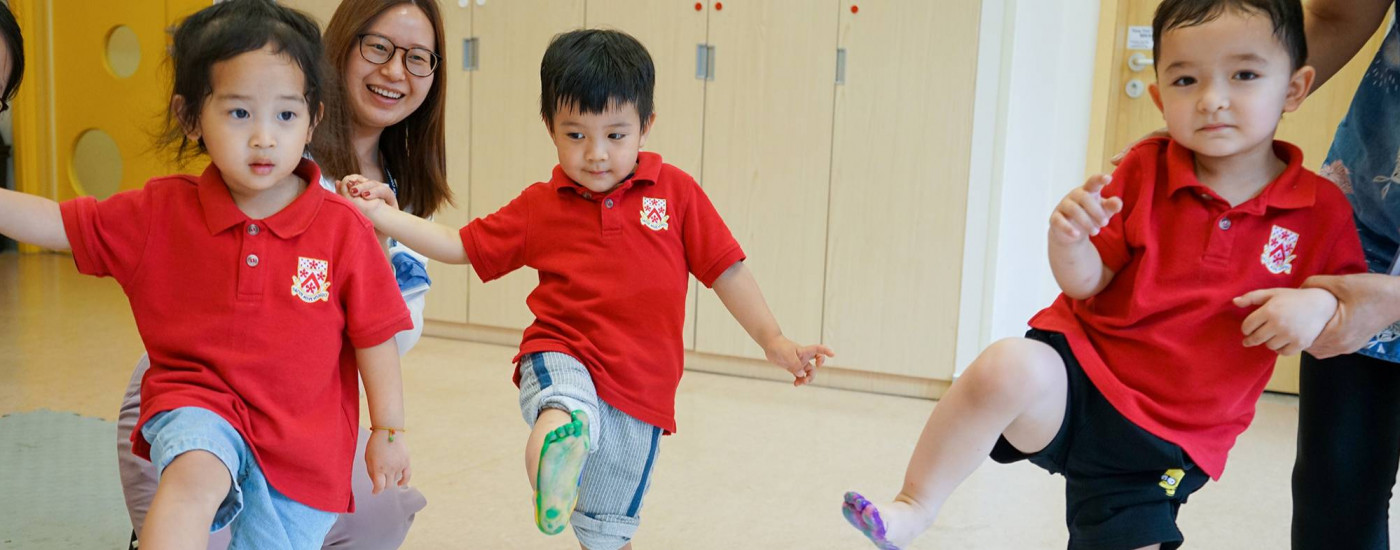The Environment As The Third Teacher

Our Early Years classrooms are lovely places to visit. Visitors to the school enjoy popping in here. They are greeted by confident children who are eager to pull them into their play, and they feel like VIPs at the end of their visit. Our specialist teachers enjoy spending time in these settings, and leave feeling a sense of calm and contentment. Potential families look through the windows and are amazed – “It’s so calm! Your teachers must have magical powers! How do they do it!”.
Our Early Years teachers are highly trained experts in this ‘magic’, and they pour all of their expertise into their most valuable asset for teaching – the environment.
What do we mean by ‘environment’?
The environment is anywhere that learning takes place, and is much more than simply the physical environment, it also encompasses the resources on offer, and the relationships that exist between the adults and children within that setting. The environment can be indoors or outdoors. It can be the classroom, the lunch hall, the corridor or the theatre.
Why is it so important?
Firstly, our environments are shaped by our knowledge of the children, so they constantly change and evolve as the children grow and learn. When we get the environment right for the children who learn there, their development accelerates in many ways. There is harmony, and a sense of purpose to children’s play. They are deeply involved in what they are doing. When the environment is not right for children, a play-based approach simply does not work, and this becomes evident through the behaviour of the children. It is not enough to simply place children in a room of toys, and hope that they will find something to do and get on with learning.
UK based Early Years expert Anna Ephgrave describes this ‘magic’ in a utopian setting – one where the environment is working for children:
‘The first thing indicating that a setting is working is that the children are engaged. Whenever the word ‘engaged’ is used, it refers to level 5 involvement as described by Ferre Laevers. Many other words are then listed – the children are happy, independent, confident, unique, taking risks, taking the lead, communicating, challenged, creative, secure, curious, persistent, sociable, enthusiastic, empathetic and so on.’
We use our knowledge of children – their developmental needs, and their emerging interests – to create enriched environments, which have a direct and positive impact on children’s brain development. Enriched environments contain carefully selected resources which are developmentally challenging and appropriate, and also enticing and irresistible, igniting curiosity and imagination.
Anna Ephgrave goes on to say ‘When children are deeply engaged, their brain is developing and new synapses are forming – i.e. they are making progress.’
Enriched environments are also vital places to stimulate accelerated language development and conversation. In her book ‘Interacting or Interfering’ (2016), Julie Fisher outlines the imperative that young children are exposed to enriched learning environments.
‘In 2006, the Basic Skills Agency commissioned research to consider how the physical environment impacts significantly on speaking and listening skills. Contributing to this research, Roskos and Neuman (2002) suggest that certain features within the physical environment and learning context provide an important infrastructure to enable the quality and quantity of children’s oral language experiences to develop. Alongside their findings, the Basic Skills Agency published a ‘communication supporting classrooms observation tool’ which highlights the physical environment as crucial in facilitating children’s exposure to diverse aspects of language and the organisation of space and provision of materials as important for maximizing language richness (DfE 2021a). However, research shows that an environment conducive to talk and interaction is as much concerned with emotional space as it is with physical space.’
The skill of the teacher as a sensitive ‘interactor’ amongst children and their play is a precise commodity, and is evaluated regularly amongst practitioners throughout the Dulwich network. Where the ‘magic’ happens is when adults develop deep and trusting relationships with the children in their care so as to almost be as a conductor is to a world class orchestra.
The enabling environment as the springboard to life-long learning
From the age of two, we are preparing children for university and beyond, so that they graduate world-wise. The power of a truly enabling environment – that is, an environment that is the third teacher – is that it develops many characteristics of effective learning that are required of students at IB level. Finding out and exploring, transferring what they know to new situations, being willing to have a go, being actively involved, being tenacious, creating and thinking critically and making links – these are all attributes that can be used to describe learners at university level. They are however, the characteristics that we intend to develop in our 2 – 4 year olds, and we do this by carefully crafting an enabling environment. In such an environment, resources and furniture are almost curated alongside our knowledge of how children prefer to move and interact with the room. We talk of ‘flow’ and analyse ‘talking hotspots’. Every object has a well though-out place, and is arranged at children’s eye level so that they have choice and full control over their learning. And then we stand back, and observe what happens when they are allowed to initiate their own play – magic!
Maximising the learning potential from children’s play is a complex process. The next time you peep into one of our Early Years classrooms, think of those beautiful swans gliding on top of the water, and their strong and powerful legs beneath the surface. Behind the scenes of all of our magical, utopian settings are superb practitioners working together to create spaces in which children thrive.
Reference
Ephgrave, A. 2018. Planning in the Moment With Young Children. Routlege. Oxfordshire.
Fisher, J. 2018. Interacting or Interfering. Open University Press.
Laevers, F. 1994. Five Levels of Wellbeing. Leuven University Press.





